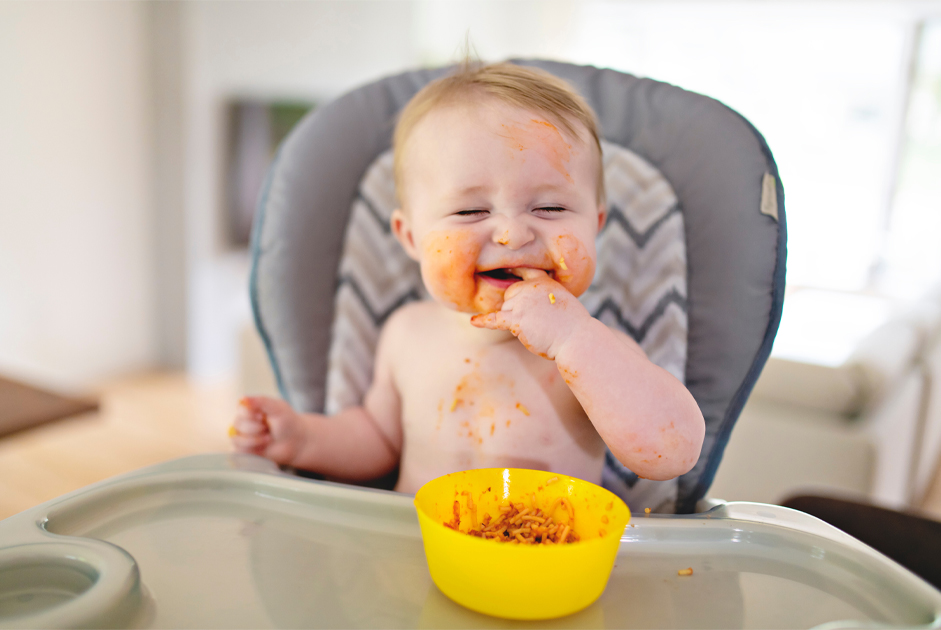Raising a healthy and intuitive eater does not have to be difficult. Let’s go over some information that may be helpful.
Important Nutrients
When starting solids, it is important to be aware of what nutrients should be encouraged and limited. Babies over the age of six months should have a diet rich in iron and vitamin D and limit added sugar and sodium.
Infants are born with iron stores but typically these are depleted by six months. It is recommended to have a diet high in iron to support immune function, neurological development and the building of red blood cells. Vitamin D is a micronutrient that is essential for building strong bones. Infants are generally provided supplemental vitamin D after birth. Once starting solids, you can incorporate vitamin D-rich foods in addition to the supplement
It is recommended by the Dietary Guidelines for Americans (DGA) that children under the age of two avoid added sugars. The DGA also suggests limiting sodium intake which can be found in processed foods, meats and some spice blends.
Division of Responsibility
The Division of Responsibility, an evidence-based approach coined by Dietitian Ellyn Satter, establishes the clear roles for the parent and child, so you can create a supportive and positive mealtime experience. Simply put, the parent provides and the child decides. The parent is responsible for what food is provided, when the meal is served and where meals are held. The child is responsible for how much they eat and whether or not they eat.
The goal of the Division of Responsibility is that you will raise a competent and intuitive eater and that mealtimes are less stressful. When you follow this approach, there is no pushing to “clean the plate” or take additional bites.
Most Common Questions about BLW
- Do I have to serve bland food?
- No, it is highly encouraged to use spices, herbs and other flavors as this will help prevent picky eating later.
- How can I make slippery food like avocado or banana easier to eat?
- You can add some traction by rolling it in wheat germ, ground flaxseed or almond flour.
- How long should meal times be?
- When starting, cap meals at 20 minutes. As babies get older, meals may become quicker because they become more efficient eaters. Once into toddlerhood, you may find it helpful to cap at 30 minutes.
- Can my baby have honey?
- It is recommended that a baby does not have honey or a product that contains honey until they are one. This is due to the potential of the Clostridium bacteria in honey causing infant botulism, a serious illness in babies.
BLW Black Bean and Cheese Quesadillas
Ingredients:
3 T olive oil (divided)
¼ tsp. garlic powder
¼ tsp. chili powder
¼ tsp. cumin
15 ounces low sodium black beans
4 large flour tortillas
2 cups shredded cheddar cheese
Instructions:
1. Drain and rinse the black beans in a colander.
2. In a small bowl, add 2 tablespoons of olive oil, garlic powder, chili powder, cumin and black beans. Mash with a fork and mix until well blended. If needed, add a few tablespoons of water and continue to mash until you get a bean puree.
3. Heat ½-1 teaspoon of olive oil in a skillet over medium heat and place a tortilla in the pan. Spread about ¼ of the bean mixture onto half of the tortilla and sprinkle ½ cup of cheese evenly on top.
4. Fold the tortilla in half and press down on the tortilla to create a seal. Cook for about 2 minutes and flip. Cook for another 2 minutes until the tortilla is golden and the cheese has melted.
5. Remove from heat and cut into strips with kitchen scissors or a pizza cutter.
6. Serve with plain Greek yogurt or guacamole.



















